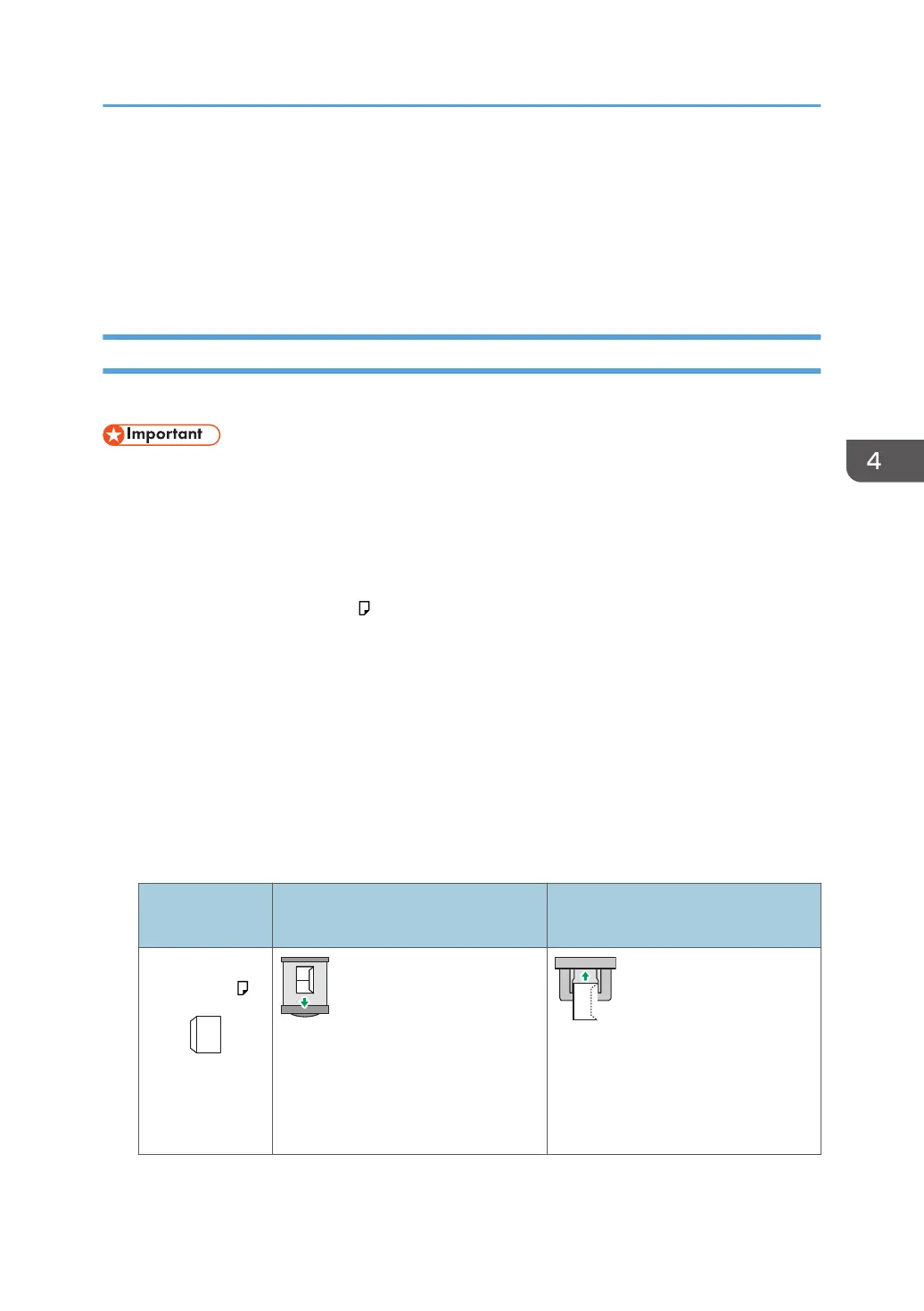• Even if thick paper is loaded as described above, normal operations and print quality might still not
be possible, depending on the paper type.
• Prints might have prominent vertical creases.
• Prints might be noticeably curled. Flatten out prints if they are creased or curled.
• When printing onto thick paper, the print speed changes.
When Loading Envelopes
This section gives you various details about and recommendations concerning envelopes.
• Do not use window envelopes.
• Fan the envelopes before loading them to separate them and prevent the glue on them from
causing them to stick together. If fanning does not prevent them sticking together, load them one by
one. Note that some types of envelopes cannot be used with this machine.
• Some kinds of envelope might cause misfeeds, wrinkles or print poorly.
• When loading envelopes in the orientation, load them with flaps closed.
• Before loading envelopes, press down on them to remove any air from inside, flatten out all four
edges. If they are bent or curled, flatten their leading edges (the edge going into the machine) by
running a pencil or ruler across them.
• When loading envelopes, do not stack paper over the limit mark. If you squeeze extra envelopes
into the bypass tray, misfeeds might occur.
In printer mode
The way to load envelopes varies depending on the orientation of the envelopes. When printing
onto envelopes, load them according to the applicable orientation shown below:
How to load envelopes
Types of
envelopes
Tray 1
Bypass tray
Side-opening
envelopes
• Flaps: closed
• Bottom side of envelopes:
toward the left of the machine
• Side to be printed: face down
• Flaps: closed
• Bottom side of envelopes:
toward the left of the machine
• Side to be printed: face up
Recommended Paper
87
